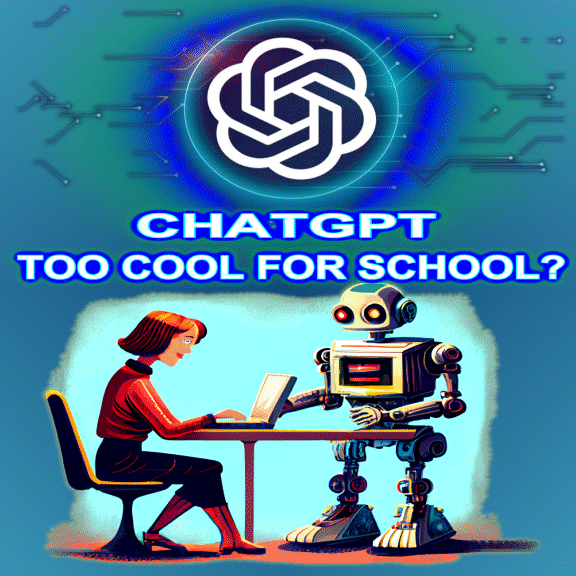CHATGPT: TOO COOL FOR SCHOOL?
As the world becomes more and more reliant on technology, it's important for us to embrace the advancements that come with it. And what better way to do that than by incorporating AI into the classroom? Specifically, let's talk about ChatGPT, the language model chatbot developed by OpenAI.
ChatGPT is a real hoot, folks. It's been trained on a massive dataset of text and code, which means it can generate text, translate languages, write different kinds of creative content, and answer your questions in an informative way. Plus, it's got a great sense of humor. I mean, have you heard the one about the chatbot who walked into a bar? Yeah, me neither. But I'm sure ChatGPT would have a killer punchline.
Now, I know what you're thinking. "Why do we need a chatbot in the classroom? Can't we just stick to good old-fashioned teaching methods?" And to that, I say: why not? ChatGPT has so many potential benefits for students. For example:
1. Help students with their writing skills. ChatGPT can generate text on any topic, and can adjust the response to reading levels. This means students can practice their writing skills and get feedback on their work. Plus, it's always good to have a second opinion on that essay you wrote at 2am.
2. Provide students with access to information. ChatGPT can access and process information from the real world through Google Search and keep its response consistent with search results. This means students can find information on any topic, even if it's not covered in their textbooks. Who needs a library when you've got ChatGPT?
3. Help students learn new languages. ChatGPT can translate text from one language to another. This means students can learn a new language or brush up on their existing skills. Bonjour, ChatGPT!
4. Foster critical thinking skills. ChatGPT can be used to generate creative text formats, like poems, code, scripts, musical pieces, email, letters, etc. This means students can practice their critical thinking skills and come up with new ideas. Who knows, maybe the next Shakespeare is actually a chatbot.
Of course, there are some potential risks associated with using ChatGPT in the classroom. For example, students could use it to plagiarize work or cheat on assignments. But let's be real, if a student is going to cheat, they're going to find a way to do it regardless of whether or not there's a chatbot involved. And besides, ChatGPT is too cool to not use just because of a few bad apples.
In fact, I've heard some pretty funny stories about ChatGPT in the classroom. Like the time one student used it to write a paper on the history of the Civil War and the teacher thought they had plagiarized it. Or the time a student used it to help them with a math problem and actually understood what was going on. Or the time a teacher used it to create a virtual assistant for their classroom and it told jokes that were actually funny.
The point is, ChatGPT can be a valuable tool for helping students learn and develop the skills they need to succeed in the 21st century. So why not give it a try? Who knows, maybe one day we'll all be replaced by chatbots and this article will be written by ChatGPT 2.0. I, for one, welcome our new chatbot overlords.
Schools in northern Nevada ban ChatGPT, others welcome it for classwork https://mynews4.com/on-your-side/schools-in-washoe-county-ban-chapgpt-others-welcome-it-for-classwork-wcsd-ai-artificial-inteligence-bishop-manogue-coral-academy-cheating-plagiarism

